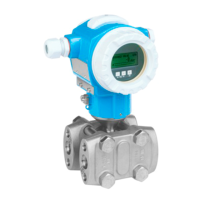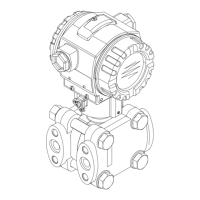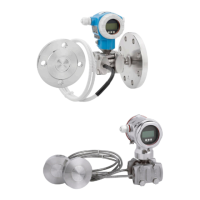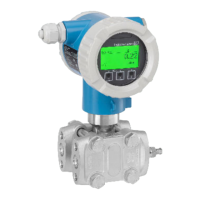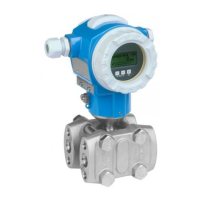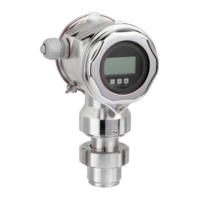Deltabar S
Endress+Hauser 29
PMD75 (with metallic process isolating diaphragms)
FMD77 (with metallic process isolating diaphragms)
Pressure specifications • The maximum pressure for the measuring device is dependent on the lowest-rated element with regard to
pressure, see the following sections for this:
– ä 8 ff, section "Measuring range"
– chapter "Mechanical construction".
The MWP (maximum working pressure) is specified on the nameplate. This value refers to a reference
temperature of 20°C (68°F) or 100°F for ANSI flanges and may be applied to the device for an unlimited
time. Observe pressure-temperature dependency.
• The pressure values permitted at higher temperatures can be found in the following standards:
– EN 1092-1: 2001 Tab. 18
1
– ASME B 16.5a – 1998 Tab. 2-2.2 F316
– ASME B 16.5a – 1998 Tab. 2.3.8 N10276
– JIS B 2220
• For PMD70 and PMD75, the MWP applies for the temperature ranges specified in the "Ambient temperature
range" ( ä 27) and "Process temperature limits" ( ä 28) sections.
• The test pressure corresponds to the over pressure limit of the measuring instrument (Over pressure limits
OPL = 1.5 x MWP) and may fit only temporally limited, so that no permanent damage develops.
• The Pressure Equipment Directive (EC Directive 97/23/EC) uses the abbreviation "PS". The abbreviation
"PS" corresponds to the MWP (maximum working pressure) of the measuring device.
• In the case of sensor range and process connections where the OPL (Over Pressure Limit) of the pressure
connection is smaller than the nominal value of the sensor, the device is set at the factory, at the very
maximum, to the OPL value of the process connection. If you want to use the entire sensor range, select a
process connection with a higher OPL value (1.5 x PN; PN = MWP).
• In oxygen applications, the values for "p
max
and T
max
for oxygen applications" as per ä 26, "Oxygen
applications" may not be exceeded.
Versions for feature 80 in the
order code
Seal Process temperature range
1
1) lower temperature on request
A FKM Viton –20...+85°C (–4...+185°F)
C PTFE –40...+85°C (–40...+185°F)
F NBR –20...+85°C (–4...+185°F)
H Copper –40...+85°C (–40...+185°F)
K Copper, cleaned for oxygen service –20...+85°C (–4...+185°F)
1 FKM Viton, cleaned from oil and greace –10...+85°C (+14...+185°F)
2 FKM Viton, cleaned for oxygen service –10...+60°C (+14...+140°F)
3 PTFE, cleaned for oxygen service –20...+60°C (–4...+140°F)
Versions for feature 70 in the
order code
Seal on the LP side (–) Process temperature range
1
1) lower temperature on request
B, D, F, G FKM Viton –20...+85°C (–4...+185°F)
H, J PTFE –40...+85°C (–40...+185°F)
K, L EPDM –40...+85°C (–40...+185°F)
M, N Kalrez, Compound 6375 +5...+85°C (+41...+185°F)
P, Q Chemraz, Compound 505 –20...+85°C (–4...+185°F)
S FKM Viton, cleaned from oil and greace –10...+85°C (+14...+185°F)
T FKM Viton, cleaned for oxygen service –10...+60°C (+14...+140°F)
1) With regard to their stability-temperature property, the materials 1.4435 and 1.4404 are grouped together under 13EO
in EN 1092-1 Tab. 18.
The chemical composition of the two materials can be identical.

